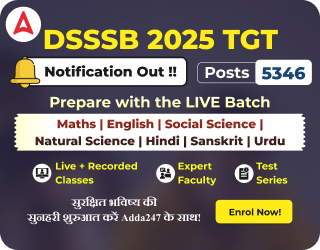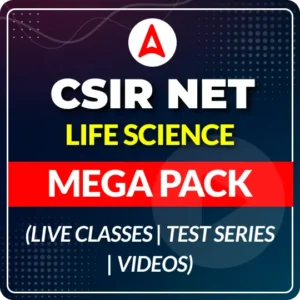Table of Contents
The CSIR NET Chemical Science 2025 syllabus, released by NTA on its official website, comprehensively covers core areas including Inorganic Chemistry, Organic Chemistry, Physical Chemistry, and interdisciplinary topics. With the December 2025 exam approaching, aspirants must thoroughly review the updated syllabus and exam pattern to strategize their preparation effectively. A clear understanding of the prescribed topics, from fundamental concepts to advanced applications, is essential for success in this competitive exam for Junior Research Fellowship (JRF) and Lectureship roles.
CSIR NET Chemical Science Syllabus 2025
The CSIR NET Chemical Science syllabus and official notification are now available on NTA’s website. Aspiring candidates must thoroughly understand the syllabus, which is systematically divided into Inorganic, Organic, Physical Chemistry, and interdisciplinary topics for easier comprehension. Given the extensive coverage, a deep grasp of both fundamental and advanced concepts is crucial for effective preparation. With the exam approaching, candidates should align their studies with the prescribed syllabus to maximize their chances of qualifying for JRF and Lectureship roles.
CSIR NET Chemical Science Exam Pattern 2025
The CSIR NET Chemical Science exam consists of a single paper divided into three parts: Part A (General Science and Aptitude, 20 questions), Part B (Core Chemical Science, 40 questions), and Part C (Advanced Chemical Science, 60 questions). The exam is an objective-type (MCQs), conducted for 180 minutes, with a maximum of 200 marks. Negative marking applies for incorrect answers in Parts A & B, while Part C may have partial marking. The exam is computer-based (CBT), and candidates must qualify for each section separately.
| Section | Topics | Questions | Marks |
|---|---|---|---|
| Part A | General Aptitude, Reasoning, Maths | 20 (Attempt 15) | 30 |
| Part B | Core Chemistry (Inorganic, Organic, Physical, etc.) | 40 (Attempt 35) | 70 |
| Part C | Advanced Chemistry & Application-based | 60 (Attempt 25) | 100 |
CSIR NET Chemistry Syllabus (Section-wise)
CSIR NET Chemical Science Syllabus is divided into three parts, i.e, A, B & C. Part A is the general part for all the posts, & Part B & C consist mainly of the subject concerned part. Some of the important topics are Enantioselectivity, Organic chemistry’s principles, and Chiral auxiliaries, Nuclear reactions, fission, fusion, Enzyme kinetics, etc.
CSIR NET Chemical Science Syllabus for Part A
The candidate may access the CSIR NET Chemical Science General paper in the table below. The candidates must check out the topics to decipher the length and vastness of the NET Chemical Science Syllabus for the General Paper.
| CSIR NET Chemical Science Syllabus: Part A | |
|---|---|
| Graphical Analysis & Data Interpretation | Pie-Chart |
| Line & Bar Chart | |
| Graph | |
| Mode, Median, Mean | |
| Measures of Dispersion | |
| Table | |
| Reasoning | Puzzle |
| Series Formation | |
| Clock and Calendar | |
| Direction and Distance | |
| Coding and Decoding | |
| Ranking and Arrangement | |
| Numerical Ability | Geometry |
| Proportion and Variation | |
| Time and Work | |
| HCF and LCM | |
| Permutation and Combination | |
| Compound and Simple Interest | |
CSIR NET Chemistry Syllabus for Part B & C
Candidates have a look at Parts B and C of the CSIR NET Chemical Sciences Syllabus below. There is a negative marking of 25 % for each wrong answer.
| CSIR NET Earth Science Syllabus: Part B & Part C | |
| Organic Chemistry | |
| Commonly named reactions and rearrangements | Applications of organic synthesis. |
| Asymmetric synthesis | Resolution – optical and kinetic. |
| Determination of enantiomeric and diastereomeric excess | |
| Chiral auxiliaries | |
| Asymmetric induction methods– substrate, reagent, and catalyst-controlled reactions. | |
| Principles of stereochemistry | Configurational and conformational isomerism |
| Asymmetric induction | |
| Diastereoselectivity | |
| Stereogenicity | |
| Stereoselectivity | |
| Enantioselectivity | |
| Geography of India | |
| Determination of organic compounds | IR & UV-Vis |
| Mass spectroscopic methods | |
| Concepts in organic synthesis | Disconnection |
| synthons | |
| protecting groups | |
| linear and convergent synthesis | |
| Pericyclic reactions | Cycloaddition |
| Sigmatropic rearrangements, electrocyclization | |
| Other related concerted reactions. | |
| Organic chemistry’s principles and applications of photochemical reactions. | |
| Inorganic Chemistry | |
| Concepts of acids and bases | Non-aqueous solvents |
| hard-soft acid-base concept. | |
| Organometallic compounds | Bonding and structure |
| Bonding and structure | |
| Reactivity and synthesis. | |
| Organometallics in homogeneous catalysis. | |
| Bioinorganic chemistry | Porphyrins |
| Photosystems | |
| Oxygen transport | |
| Nitrogen fixation. | |
| Metal complexes in medicine | |
| Nuclear chemistry | Radio-analytical techniques |
| Activation analysis | |
| Nuclear reactions, fission, and fusion. | |
| Inner transition elements | Redox chemistry |
| Spectral and magnetic properties | |
| Analytical applications | |
| Chemical periodicity | Periodic table |
| Elements | |
| Groups | |
| Physical Chemistry | |
| Chemical applications | Group theory |
| Symmetry elements | |
| Character tables. | |
| Solid-state | Bragg’s law and applications |
| Band structure of solids | |
| Crystal structures. | |
| Polymer chemistry | Kinetics of polymerization |
| Molar masses. | |
| Colloids and Surfaces | Isotherms and surface area |
| heterogeneous catalysis | |
| Properties of colloids. | |
| Atomic structure | Spectroscopy |
| Antisymmetry principle | |
| Many-electron systems. | |
| Data analysis | Absolute and relative errors |
| Covariance and correlation coefficient | |
| Mean and standard deviation | |
| Principles of quantum mechanics | Operator algebra |
| Orbital and spin angular momenta | |
| Postulate | |
| Chemical kinetics | Complex reactions |
| Determination of reaction mechanisms | |
| Steady-state approximation | |
| Empirical rate laws and temperature dependence | |
| Enzyme kinetics | |
| Molecular spectroscopy | Basic principles of magnetic resonance |
| Electronic spectra | |
| Rotational and vibrational spectra of diatomic molecules. | |
| Approximate methods of quantum mechanics | Perturbation theory up to second order in energy |
| Variational principle and its applications. | |
| Elementary concepts of MO and VB theories | Hückel theory |
| Chemical bonding in diatomics. | |
| Electrochemistry | Includes topics such as Ionic equilibria |
| Conductometric and potentiometric titrations | |
| Debye-Hückel theory | |
| Interdisciplinary Topics | |
| CSIR NET Chemical Science Interdisciplinary Topics | Environmental chemistry |
| Supramolecular Chemistry | |
| Chemistry in nanoscience and technology | |
| Medicinal chemistry | |
| Catalysis and green chemistry | |
Download CSIR NET Chemical Science Syllabus 2025 PDF
CSIR NET is a single-paper test consisting of Multiple-Choice Questions (MCQs). The CSIR NET Chemical Science Syllabus PDF is important to keep as a document on your device to access or share with others at any time. The candidate may access the NTA NET Chemical Science Syllabus PDF from the link




 HTET Syllabus 2026 (PRT, TGT, PGT), Chec...
HTET Syllabus 2026 (PRT, TGT, PGT), Chec...
 KVS PGT Syllabus 2025, Download PGT Syll...
KVS PGT Syllabus 2025, Download PGT Syll...
 KVS Syllabus 2025 For PRT, TGT, PGT and ...
KVS Syllabus 2025 For PRT, TGT, PGT and ...












